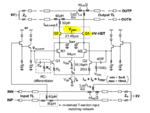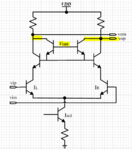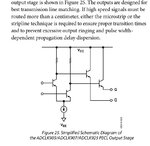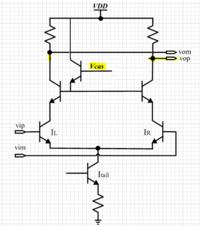prcken
Advanced Member level 1

Hi,
I have a question about how to do bias properly for BJT in CML circuits.
Usually in order to get a large voltage swing the current is really large (e.g. > 10mA), for high speed design, and cascoded device was added for avoiding breakdown (like the picture i attached). However, the base current for the cascoded devices (Q3 and Q4) usually won't be small, so that poses challenge for designing the Vcasc.
Basically, Vcasc drops due the base current!
I don't think just by boosting Vcasc is a good way to solve it. Do you have any comments?
Thanks!

I have a question about how to do bias properly for BJT in CML circuits.
Usually in order to get a large voltage swing the current is really large (e.g. > 10mA), for high speed design, and cascoded device was added for avoiding breakdown (like the picture i attached). However, the base current for the cascoded devices (Q3 and Q4) usually won't be small, so that poses challenge for designing the Vcasc.
Basically, Vcasc drops due the base current!
I don't think just by boosting Vcasc is a good way to solve it. Do you have any comments?
Thanks!









